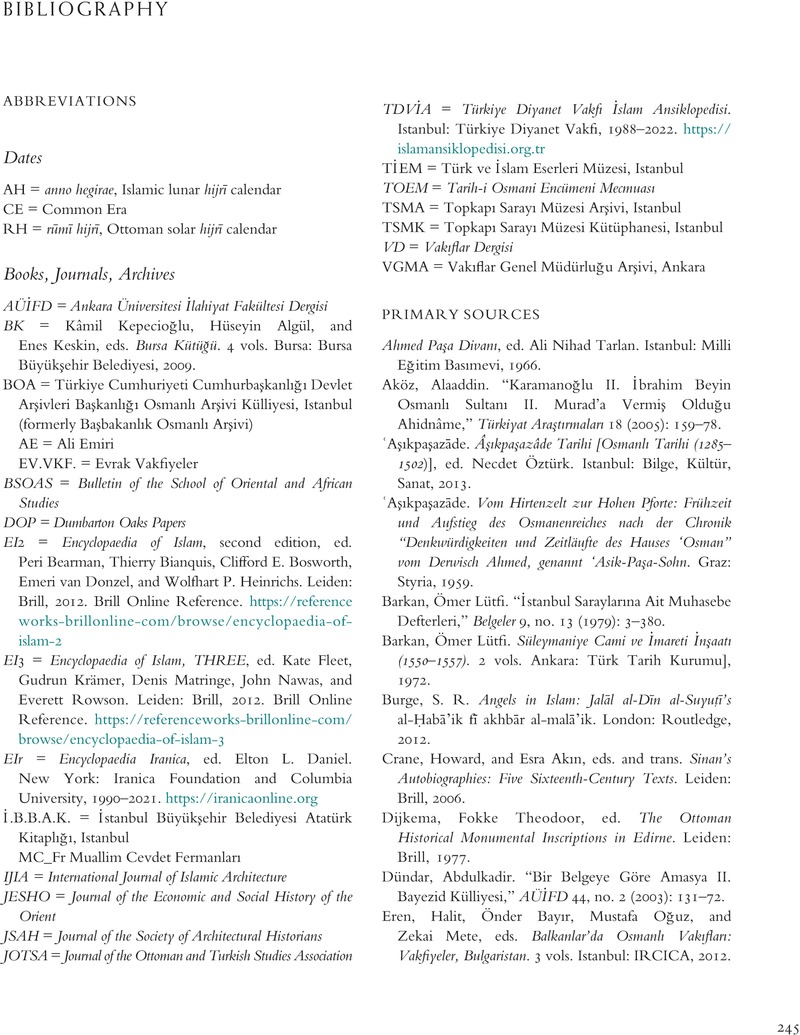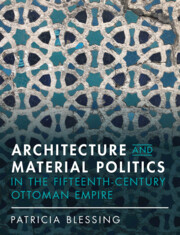Book contents
- Architecture and Material Politics in the Fifteenth-Century Ottoman Empire
- Architecture and Material Politics in the Fifteenth-Century Ottoman Empire
- Copyright page
- Contents
- Note on Transliteration, Spelling, and Dates
- Acknowledgments
- Maps
- Introduction Material Politics of Architecture in a Fluid Empire
- One Imperial and Local Horizons
- Two Immersive Space
- Three Under the Influence
- Four Building Paradise
- Five An Ottoman Aesthetic
- Conclusion
- Notes
- Bibliography
- Index
- References
Bibliography
Published online by Cambridge University Press: 28 July 2022
- Architecture and Material Politics in the Fifteenth-Century Ottoman Empire
- Architecture and Material Politics in the Fifteenth-Century Ottoman Empire
- Copyright page
- Contents
- Note on Transliteration, Spelling, and Dates
- Acknowledgments
- Maps
- Introduction Material Politics of Architecture in a Fluid Empire
- One Imperial and Local Horizons
- Two Immersive Space
- Three Under the Influence
- Four Building Paradise
- Five An Ottoman Aesthetic
- Conclusion
- Notes
- Bibliography
- Index
- References
Summary

- Type
- Chapter
- Information
- Publisher: Cambridge University PressPrint publication year: 2022



